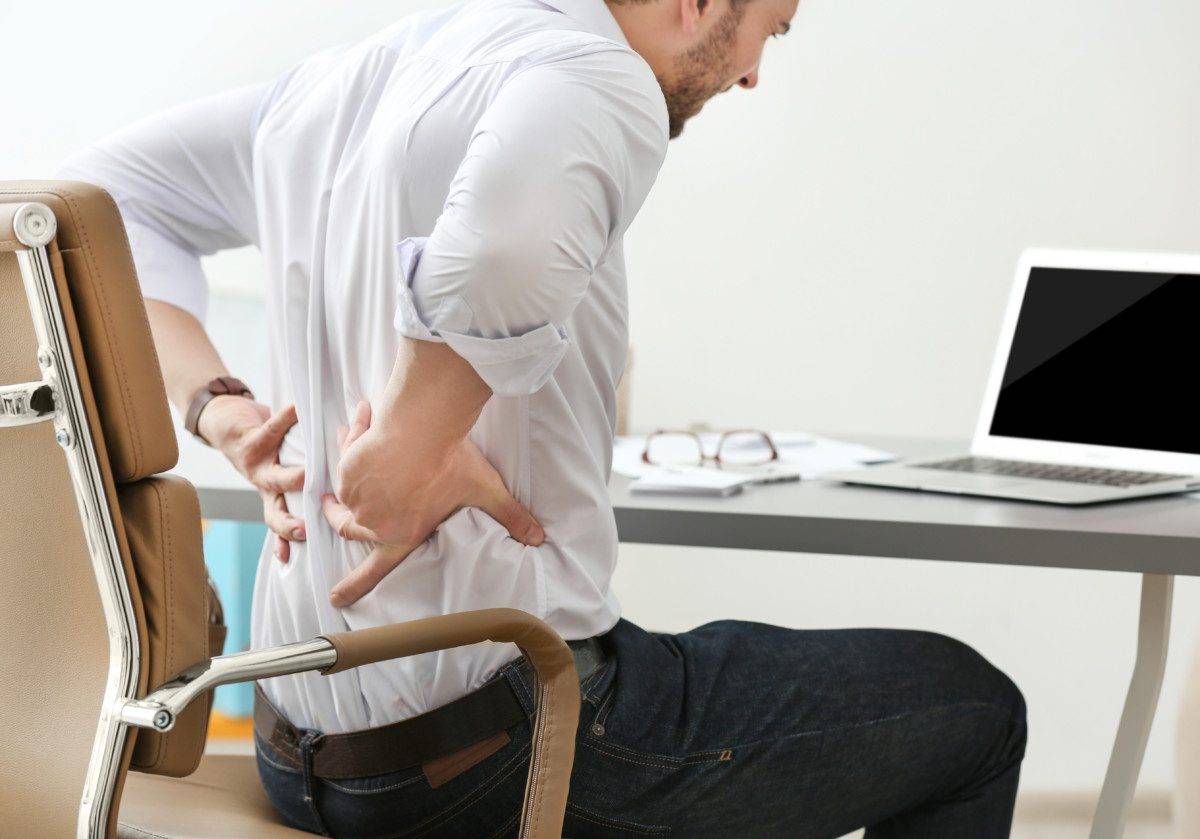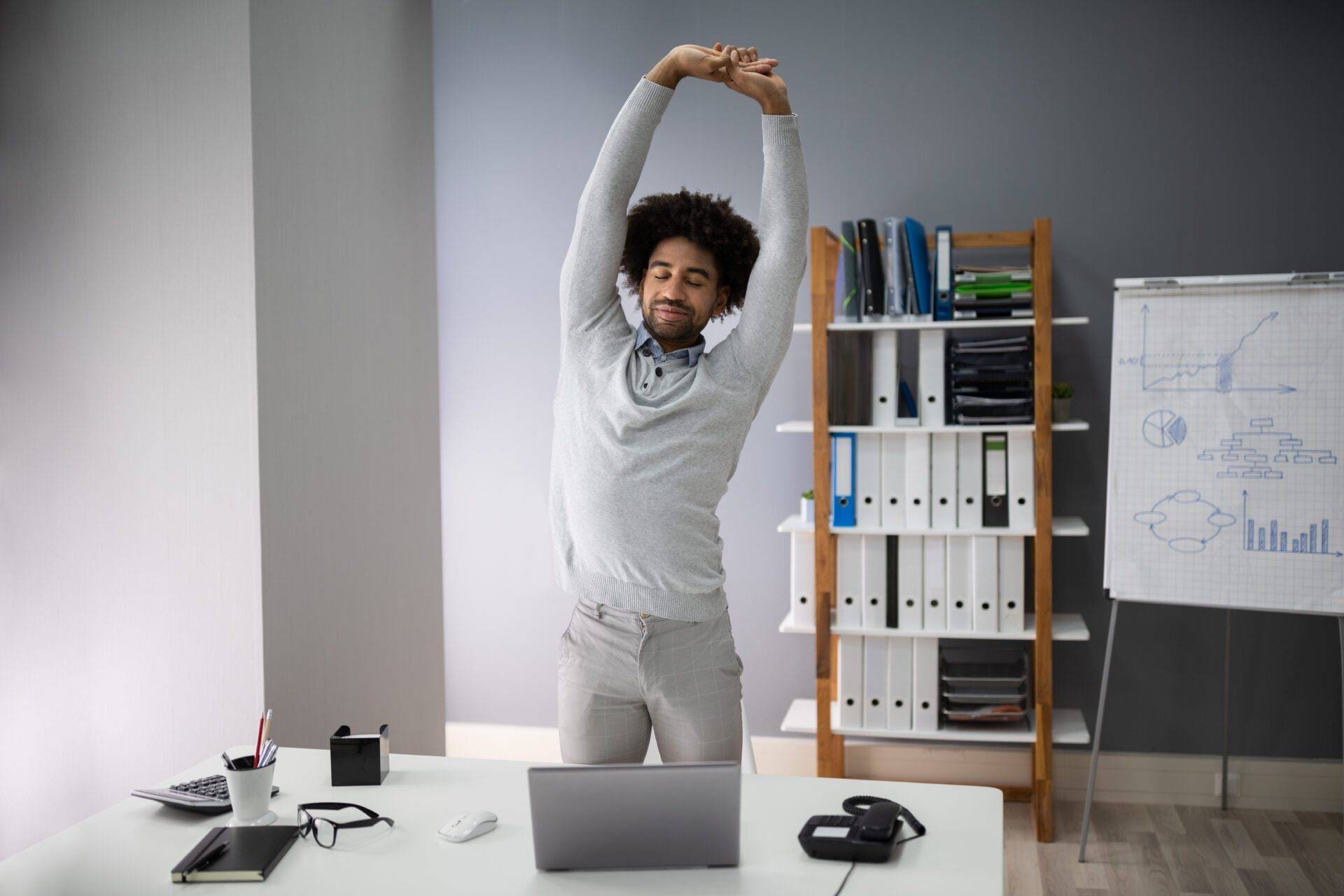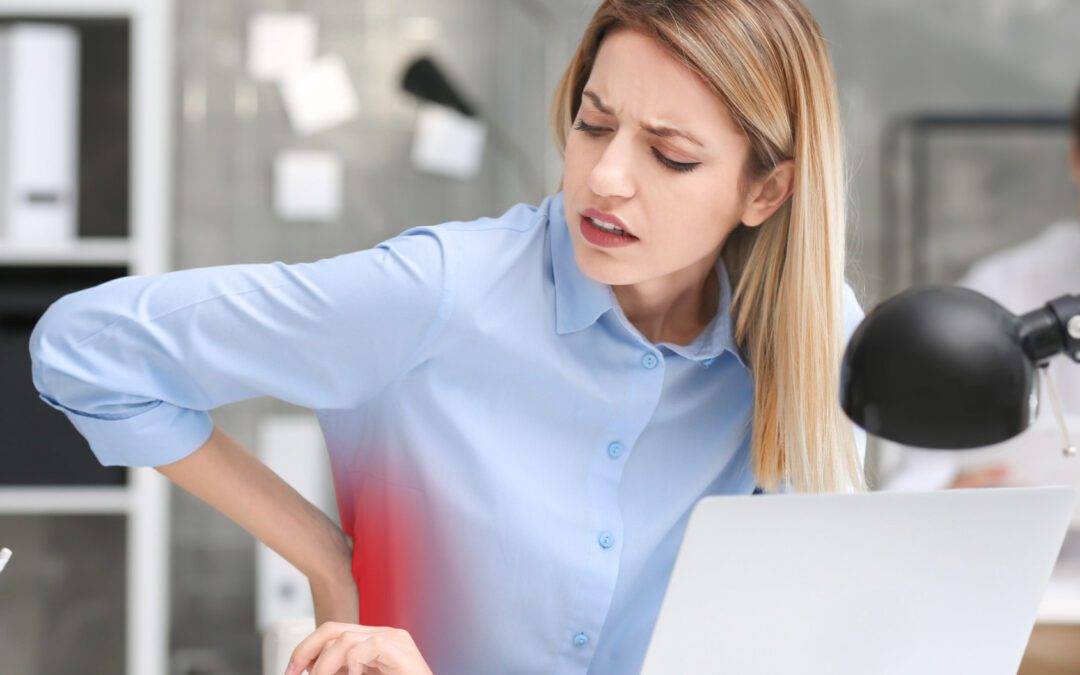By Megan White, RMT
4 Minute Read

As you can imagine, when you are sitting down, the hip flexors are in the shortened position. Over time, tissues that stays in a shortened position will no longer want to lengthen to its original length. This shortened muscle will then pull your spine and hip bones forward causing excessive compression through the spine and hips, decreased extension, joint dysfunction, and ultimately pain. The pain and discomfort are usually felt during other activities such as standing or walking for extended periods, going to and from a sitting position, or even walking up steps.
The key to reducing this pain is to keep the muscle tissues at a healthy resting length where they can allow for full, unrestricted mobility in the hips and spine. This can be achieved by simple stretches. Stretching a muscle lengthens and separates individual muscle fibers, allowing them to return to their natural length thus decreasing the tension pulling on the low back.

To warm up the muscles manually, a set of high knees will do the trick. Slow and controlled, bring one knee at a time to your chest and try to hold for 2-3 seconds without using your arms to pull it closer. Do this 8-12 times on each side. This gets the muscle fibers firing and warm.
Now they can be stretched. The best stretch for your iliopsoas is the runners lunge. It is an easy stretch that has multiple levels and can be easily controlled for everyone’s comfort and level of mobility.

The Runner’s Lunge:
Standing with your feet shoulder-width apart, take a large step back with your right leg and gently lunge forward bending the left knee. Place your right knee on the ground and make sure your left knee does not lean past your toes.
Sink into this lunge until you feel the stretch in the front of your hip. You can place or hands on the ground in front of you with your chest resting on your left quad or you can lift your chest and rest your hands on your quad, whichever position feels the most comfortable for you. However, to properly achieve a maximal stretch on the iliopsoas at the lumbar portion of the muscle, you need to keep your spine as upright as possible and not lean the torso forward. Hold this stretch for 30 seconds and slowly come out of it and back to standing. Repeat on the other side. A chair or a wall will help for balance until you are comfortable with the motion.

Your abdominals are responsible for trunk flexion (crunches!) and the tight iliopsoas is pulling your trunk into a mild extension. Therefore, your brain and nervous system cannot contract both at the same time, as they are opposing actions. By activating your abdominals you are allowing the relaxation of iliopsoas, letting the stretch do its job and lengthen the short muscle. Performing this stretch twice a day for 30 seconds on each side will greatly reduce the tension or pain you can feel in the low back.
Stretching and increasing flexibility are great for your body’s general health and should be incorporated into everyone’s daily routine. However, most people can generally feel results in 2-3 weeks and even see results in 4-6 weeks. Do these stretches and feel the difference for yourself. Who knows, maybe it will encourage adding more stretching into your daily routine.

